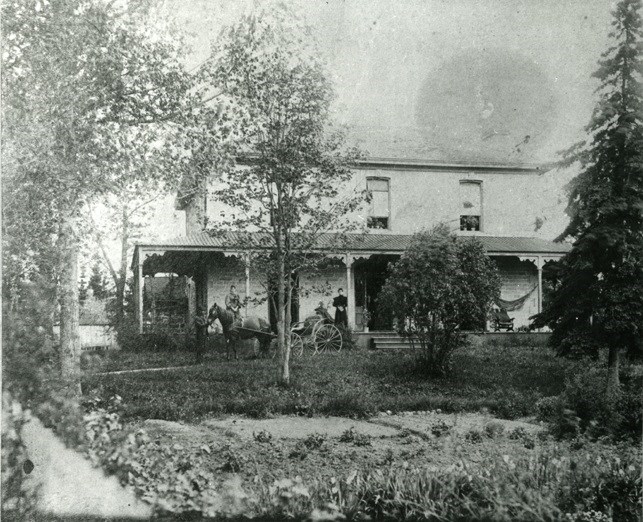From the archives of the Sault Ste. Marie Public Library:
*************************
Remember This?... Wemyss M. Simpson
Wemyss MacKenzie Simpson was born in London, England in 1825. He was the youngest of the seven sons of Geddes MacKenzie Simpson and Frances Simpson. He was educated in England at Eton, an English boys' independent boarding school located in Eton, Berkshire, near Windsor. Simpson came to Canada when he was still a young man. He was said to be a cousin of Sir George Simpson, Governor-in-Chief of Hudson’s Bay Territories. He married Annie Ironside and they had 14 children. Annie died in 1874 and Simpson then married her sister, Eliza Isabella Ironside.
He came to Lower Canada in 1841 as an employee of the Hudson’s Bay Company, beginning as an apprentice clerk at the Lachine Depot. He worked with the Hudson’s Bay Company for 24 years, eight of which he was Chief Factor. In 1844 he went to Red River in charge of the first party of Grey Nuns to go west. He served for short periods in York Factory, Oxford House, Norway House and Red River. He had the distinction of being the first Member of Parliament from Algoma as well as the last factor for the Hudson’s Bay Company in Sault Ste. Marie.
Simpson was stationed in Sault Ste. Marie twice, in 1849-1851 and again from 1855-1865. He was president of the Algoma District Agricultural Society and succeeded Captain Joseph Wilson as postmaster in 1857. He served in that capacity until 1858.
Algoma seemed to have won his heart as he built his home here, stayed on as a civil servant and Member of Parliament and even named one of his 14 children Algoma Simpson. In 1870, Simpson acted as guide and interpreter for the Red River Expeditionary Force. The Red River Rebellion was the sequence of events related to the 1869 establishment of a provisional government by the Métis leader Louis Riel and his followers at the Red River Colony, in what is now the province of Manitoba. For a period it had been a territory called Rupert's Land under control of the Hudson's Bay Company.
Simpson was twice elected to represent Algoma in the Canadian House of Commons but on his second election in 1871 he resigned almost immediately in order to accept the appointment of Indian Commissioner to negotiate a treaty with the Indians in Manitoba. He resigned as Indian Commissioner in 1873 and retired from public life to Sault Ste. Marie.
Simpson was instrumental in the promotion of the establishment of St. Luke’s Cathedral in 1870. He served as rector’s warden in 1865 and again in 1879.
Simpson’s residence, named Upton, was built in 1865 by Simpson, and was originally located on Queen Street East. However, it is now located at 10 Kensington Terrace, east of Upton Road. The change in street name came about, according to Heather Ingram’s book, Views of the Sault, “due to the continuous growth of the community, which moved the front boundary of the property back towards the house, enabling a new street, Kensington, to subsequently be located between the house and Queen Street.” It is the second oldest stone house in the city, second in age only to the Ermatinger Stone House.
Simpson died on March 31, 1894 at Old Point Comfort in Hampton, Virginia but was buried in the Sault Ste. Marie Queen Street Cemetery. Three city streets, Wemyss, Simpson and Upton, are named in his honour to recognize the contribution that Wemyss MacKenzie Simpson made to the community.
*************************
Each week, the Sault Ste. Marie Public Library and its Archives provides SooToday readers with a glimpse of the city’s past.
Find out more of what the Public Library has to offer at www.ssmpl.ca and look for more Remember This? columns here
